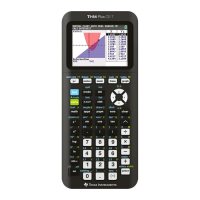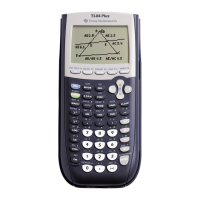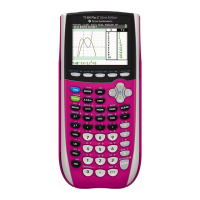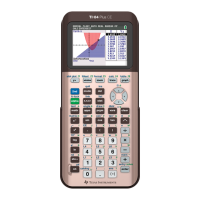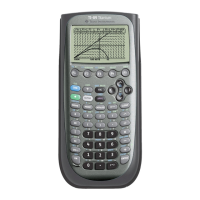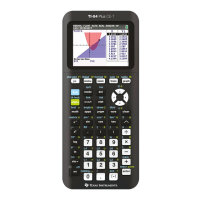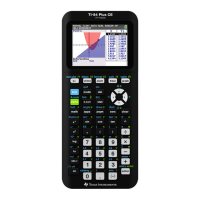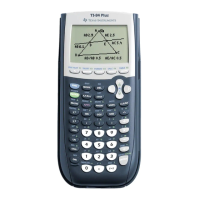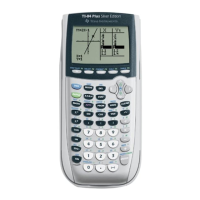Chapter 5: Linear Systems Section 1: Using Graphs & Tables
Topics in Algebra 1 © 2001, 2002 Texas Instruments Teacher Notes 5-14
³ Try-It!é on Your TI-83 Plus or TI-73
Students search for the solution of a system of two linear equations in two variables using
graphing and tracing, and a table. The problem has been chosen so that students do not trace to
the exact solution and need to use the table to search. They could also choose to change the
window so that they could trace to the exact solution. This is not an efficient choice, but could
be pursued, and the investigation would be enriching.
The students will:
•
Graph two lines of a system of equations.
•
Use
r
to locate the intersection of the lines.
•
Use
y -
and
y 0
to locate the exact solution of the system of equations.
Note: Students will learn more about the calculator features intersect (TI-83 Plus) and Solver (TI-83 Plus and TI-73) in the
³
Try-It! section
in Chapter 5: Linear Systems, Section 2: Using Algebra.
Tell students to follow the steps exactly on the calculators. Example screens are displayed on
the worksheets for students to compare with the calculator screens.
Solution Search
Tell students to:
• Rewrite the system in slope-intercept form, y = mx + b, if necessary.
• Use the slope-intercept form of the equations to draw a rough sketch of the lines. Verify the
graphs on the calculator. Estimate the solution so they have an idea of how many solutions
there are and where the solution is located.
• Search for the solution of the equation on the calculator using graphs and a table.
Notes: Since the calculator only uses the variables X and Y for graphs, tables and some other features, students must decide which
variable in the problem should be X and which one should be Y when the problem uses other variables. Discuss independent and
dependent variables, emphasizing that the calculator is set up to treat X as the independent variable and Y as the dependent variable.
Remind students to use parentheses correctly when they enter equations into the Y= editor. For example, (1/3)X is not the same as
1/3X which is 1/(3X) when the order of operation rules are applied by the calculator. However, when TI-73 users enter 1/3 using the =
key, their entry is calculated correctly.
Remind students to change the viewing window ( p ) or table setting ( y - ) to do the search. ³ TIp 4: Creating a Table
and ³ TIp 5: Adjusting the Viewing Window provide additional help with the calculator.
• Explain how they found the solution.
• Write out the check of their solution.
Answers:
1. (x, y) = (M3, M2)
2. (x, y) = (3, 7/3)
3. (w, t) = (M15, 65) Students are not given which variable is dependent and which is
independent. They may very well write the solution as (t, w) = (65, M15).
4. Lines are parallel, which implies that there are no solutions.
5. Lines are the same, which implies that there are an infinite number of solutions.
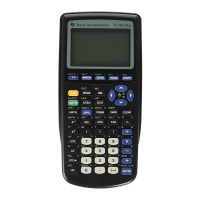
